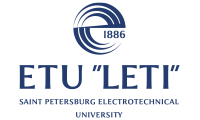Researchers from Saint Petersburg Electrotechnical University “LETI” are developing an innovative method for COVID-19 express-diagnostics and treatment, using peptides spatially complementary to the coronavirus spike protein.
Over 4 million people all over the world have contracted the new coronavirus infection and the virus has claimed over 300,000 lives. Researchers from various countries are now developing a vaccine and a cure that would help stop the pandemic from taking over the planet.
The ETU "LETI" Microtechnology and Diagnostics Engineering Centre has developed an innovative approach to diagnosing and inactivating the virus. To achieve that, the center proposes to use peptides – short chains of amino acid residues that are spatially complementary to the coronavirus SARS-CоV-2 spike protein.
When contracting the coronavirus, SARS-CoV-2 is adsorbed by a cell surface. It hooks onto ACE2 receptors (present in lungs and other organs) using spike proteins that are complementary to it. ACE2 receptors essentially provide an entry point for the virus. Then, it enters the cell and start the replication process. The virus reproduces by inserting its RNA into the cell’s genetic machinery. As a result, the cell turns into a miniature assembly plant for coronavirus virions.
ETU “LETI” researchers have concluded that to inactivate the coronavirus and to carry out express-diagnostics, we need oligopeptides, spatially complementary to the coronavirus spike protein. A biochip armed with such peptide molecules could bind the coronavirus and identify it rapidly. Additionally, such a biochip can block the viral epitope, taking away its ACE2 binding abilities or, in other words, inactivate it.
“The task is to find short peptides that would compete with the ACE2 receptor for the recognition of coronavirus spike fragments.” – Tatyana Zimina, PhD in Physics and Mathematics, Lead Researcher at the Microtechnology and Diagnostics Engineering Centre, ETU "LETI".
To analyze the spatial structure of the bond between the SARS-CoV-2 spike protein and the ACE2 receptor, the researchers have used the university’s own method of Conjugated Ionic-Hydrogen Bonds Systems (CIHBS) as a foundation to build supramolecular biological structures on and as charge transfer channels through these structures. Protein-3D, a computer program for visualizing supramolecular structures, helped put the idea into practice.
Based on the spatial configuration of the coronavirus spike and the ACE2 protein, as well as their CIHBS analysis, ETU "LETI" researchers developed two sequences of amino acid residues, with a structure complementary to the coronavirus spike. An experimental study will show which of the two proposed peptide options would be more effective.
The results obtained by the researchers can be used in antiviral therapy and express-diagnostics administered through multi-modal biochips that would identify the coronavirus subfamily members in a matter of less than 30 minutes.
ETU “LETI” researchers plan to develop peptide sequences, test molecular complementarity at the protein/peptide system level, develop a biochip platform, conduct toxicity tests, study methods of application in antiviral therapy, and conduct clinical trials of peptides and biochips. Their work should result in an innovative certified rapid test system. The development will take approximately 8-10 months.
The university collaborates with Research Institute of Influenza, Institute of Ultra Pure Biochemical Preparations and Saint Petersburg Pasteur Research Institute of Epidemiology and Microbiology.
The SARS-CoV-2 coronavirus-related research fits in with a broader R&D project that has been on the agenda at ETU “LETI” for the last couple of years - multi-modal biosensors for express-recognition of biomarkers, viruses and molecules.
The research entails searching for complimentary synthetic molecules, which is currently a very topical issue. The Microtechnology and Diagnostics Engineering Centre experts applied their own Protein-3D software to solve it. The software helps visualize active sites in proteins and their topologies. Currently, the method helps visualize such bonds in α-helices. The researchers are now developing program plug-ins that would find sequences to more complex areas.
Biomarker diagnostics is one application area for the technology. The term biomarkers refers to proteins that diffuse in blood when the human body sustains an injury. Many biomarkers have already been discovered, including myoglobin and creatine phosphokinase (bloodstream concentration rises in response to skeletal or cardiac muscle injury), C-reactive protein (concentrations rise in response to inflammation), homocysteine (a mental disorder biomarker), myeloperoxidase (stress protein), various troponins and lactate dehydrogenase.
When these markers are detected in the bloodstream at an earlier stage of disease, express-diagnostics can be carried out in symptomless patients, which is essential for the doctors to identify further treatment methods rapidly. Die to fact that biomarker diagnostics is highly informative, even heart surgeon can rely on it to trace the operation effectiveness.
ETU “LETI” researchers have taken the task of identifying just these minor biomarkers among hundreds of other proteins. The ETU “LETI” Microtechnology and Diagnostics Engineering Centre have developed a peptide complimentary to the troponin T. The peptide could be used in acute myocardial infarction (MI) testing in symptomless patients, using protein biochips (the test only takes 10 minutes). To identify other MI markers (myoglobine), the researchers are developing peptide ligands for multi-model biochips. The other goal is to identify stress proteins or myeloperoxidase.
ETU “LETI” has also been collaborating with Pavlov University and Institute of Ultra Pure Biochemical Preparations.
The researchers have also worked on the science behind and the technology for multi-modal biochips that identify pathogens and test their antibiotic resistance. A benefit that the technology provides is that it reduces the analysis to 6-8 hours. The research group has also patented a microcolony visual image library. The partners in this project are Institute of Ultra Pure Biochemical Preparations and Saint Petersburg Pasteur Research Institute of Epidemiology and Microbiology.
The ETU “LETI” development is congruent with the National Project Healthcare that aims to reduce working-age population mortality, among other things.





